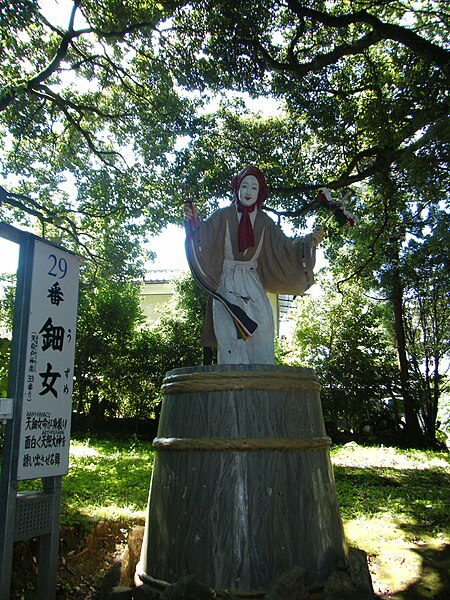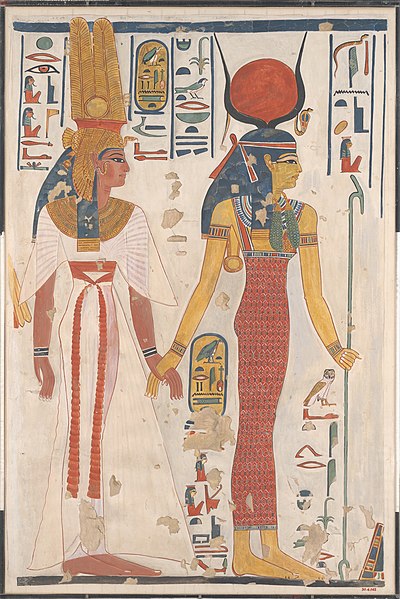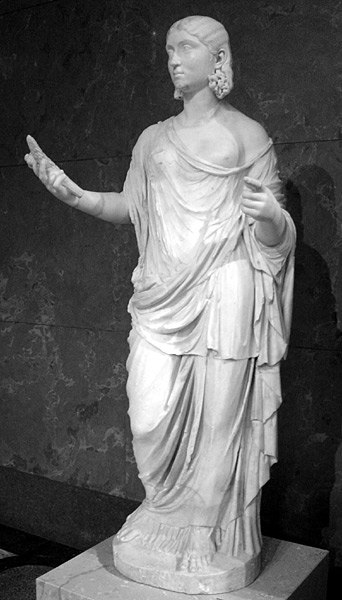Ame-no-Uzume-no-Mikoto is the goddess of dawn, mirth, meditation, revelry and the arts in the Shinto religion of Japan, and the wife of fellow-god Sarutahiko Ōkami. She famously helped draw out the missing sun deity, Amaterasu Omikami, when she had hidden herself in a cave. Her name can also be pronounced as Ama-no-Uzume-no-Mikoto. She is also known as Ōmiyanome-no-Ōkami, an inari kami possibly due to her relationship with her husband.
She is also known as Ame-no-Uzume-no-Mikoto, The Great Persuader, and The Heavenly Alarming Female. She is depicted in kyōgen farce as Okame, a woman who revels in her sensuality.
The statue of Ame-no-Uzume at Amanoiwato-jinja
Uzume dancing to lure out Amaterasu.
Tablet at the Ama-no-Uzume shrine in Takachiho
Image: Saruta hiko and Uzume illustration by William Aston
A goddess is a female deity. In many known cultures, goddesses are often linked with literal or metaphorical pregnancy or imagined feminine roles associated with how women and girls are perceived or expected to behave. This includes themes of spinning, weaving, beauty, love, sexuality, motherhood, domesticity, creativity, and fertility. Many major goddesses are also associated with magic, war, strategy, hunting, farming, wisdom, fate, earth, sky, power, laws, justice, and more. Some themes, such as discord or disease, which are considered negative within their cultural contexts also are found associated with some goddesses. There are as many differently described and understood goddesses as there are male, shapeshifting, or neuter gods.
Queen Nefertari being led by Isis, the Ancient Egyptian mother goddess of magic
Portrait-Statue of an unknown woman as Ceres, Roman goddess of agriculture and motherly relationships
The goddess Freyja is nuzzled by the boar Hildisvíni while gesturing to Hyndla (1895) by Lorenz Frølich.
The Hindu warrior goddess Durga killing the buffalo-demon Mahishasura.








